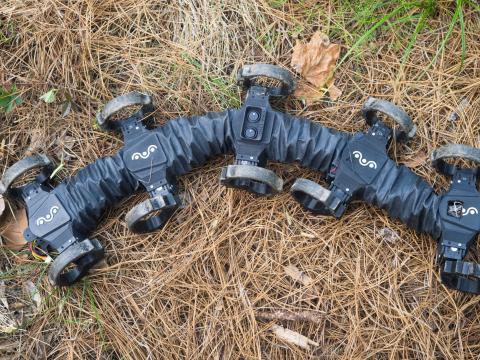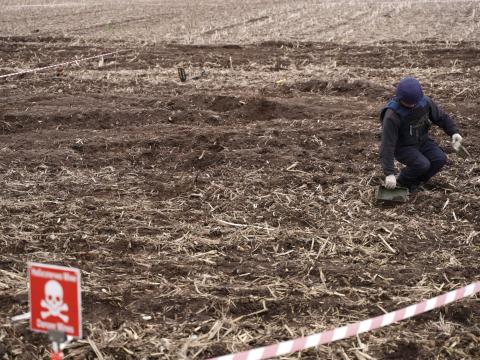President's Commentary: Robots Will Change the Battlespace
Advances in sensor mechanics and the advent of artificial intelligence have cleared the way for robots to play an increasingly greater role in military operations.
Advances in sensor mechanics and the advent of artificial intelligence have cleared the way for robots to play an increasingly greater role in military operations. Their growing versatility allows them to serve multiple functions in the military, from basic assistance to assumption of full combat roles. They can inter alia, lighten a warfighter’s load, provide search and rescue capabilities, perform surveillance missions, engage in casual evacuation, provide resupply and conduct hazardous route reconnaissance. Within 10 years, we may see them driving supply vehicles in convoys.
These activities all involve support. They include the potential for reducing manpower, easing the logistical burden on individuals and substituting for personnel in dangerous environments.
These activities are not limited to land or air. Submersible robots can carry out a variety of undersea duties that provide an unacceptable risk to humans. They also can perform tasks that cannot be undertaken by individual humans.
Robotic capabilities can go far beyond mere support. Weapons platforms can be mounted on robots to turn them into mechanical warfighters. Add sophisticated sensors and a weaponized robot can assist in protecting a formation’s exposed flank. Over time, robots will assume many of the same functions as humans. These mechanical marvels will move up the ranks from combat support devices to full-fledged combat partners.
The innovations that will underpin this capability already are appearing in today’s robots. Devices now are developing a sense of touch that will enable them to experience graduated dexterity and react to different degrees of contact with other objects, just as humans sense with their arms and hands.
Artificial intelligence (AI) and machine learning, particularly deep learning, lead the way in blazing new trails for robots. Researchers are developing schemes for human judgments, and these developments need to be integrated with other capabilities into the evolution of robots. Being able to integrate human judgments and reasoning with other innovative and evolving technologies will be essential.
The autonomous machines will have to be adaptable to the electronic warfare environment, so they can maneuver in the battlespace without being manipulated, destroyed or rendered ineffective. Radio frequency (RF) spectrum management will be necessary for robotic advances so they can operate effectively in what is rapidly becoming a congested RF environment. They will require access to intelligence information to include AI and machine learning to heighten situational awareness during their operation. This ultimately may lead to direct links and integration with other platform sensors and battlefield robots. Similarly, a robot must be able to send its own collected information to other platforms and sensors.
As with any innovation, the advent of human-like characteristics raises ethical questions. With robots becoming more autonomous, their weaponization will require a degree of human presence, perhaps in their software algorithms. Cameras and other sensors can feed information back to an operator who can alter the robot’s mission or even pull the plug, if necessary. The operator must be given defined rules of engagement for the robot that parallel those of humans, with these rules embedded in the machine’s software. For example, an armed robot acting autonomously must be able to determine when an enemy is in a position of surrender, as opposed to continuing as a combatant.
As responsibility for the robot becomes an issue, who will answer for a robot that causes harm when it malfunctions—or even when it performs properly? Is it the manufacturer? Is it the writer(s) of the software algorithms? Is it the robot’s unit commander, or even the actual operator? Owing to this conundrum, a human must be in the loop.
Training is important. In addition to knowing how to control a robot and taking advantage of its capabilities to the fullest, an operator must be able to diagnose developing problems with the robot. In managing and controlling the robot’s behavior, the operator must ensure safety and verify that the robot is not engaging in unsafe or unethical actions that put people in harm’s way or lead to faulty decisions.
Robots are the battlefield equivalent of a bull market for the military. Our adversaries know that too, and they are working on AI developments to generate their own capabilities. The commercial sector is a font of innovation for robotics, and others undoubtedly will tap that resource.
The robotic revolution is upon us, and incredible advances lie ahead. No one can predict the ultimate destination—if there is one—and no one can count on ideas and plans coming to fruition as intended. For the future of robots, the creativity and innovation of the commercial sector appear to have the lead.




Comments